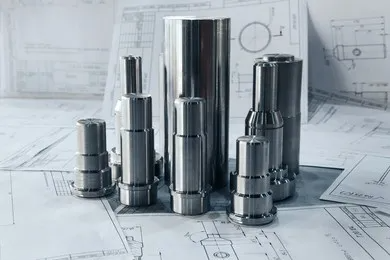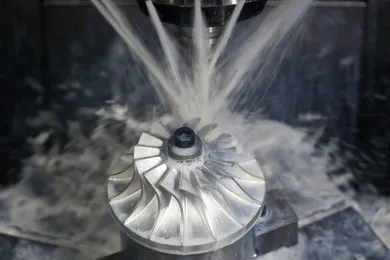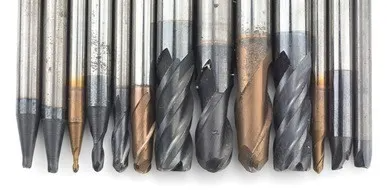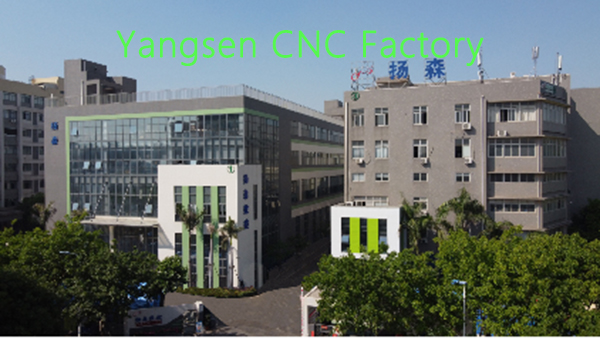Are you a CNC machinist or an operator looking to optimize your machining processes for enhanced efficiency and productivity? One critical factor that can significantly impact your results is CNC surface speed. However, understanding and effectively utilizing surface speed can be a challenge for many in the industry.
So in this comprehensive guide, we will discuss CNC Surface Speed, the factors affecting the speed, its importance, its impacts, and how to measure or monitor CNC Surface Speed.
By understanding the concept of surface speed, you will gain valuable insights into how it influences material removal rates, tool life, and surface finishes.
So, let's get started.

CNC surface speed refers to the speed at which a cutting tool or workpiece moves across the surface during CNC machining. It is measured in units like surface feet per minute (SFM) or inches per minute (in/min).
Surface speed plays a significant role in determining how quickly material is removed and the overall quality of the machined surface.
To understand the concept, let's take an example of a CNC lathe cutting a metal rod. The surface speed would be how fast the cutting tool moves along the surface of the rod while removing material to shape it. If the surface speed is high, the tool moves quickly, resulting in faster material removal. This can be compared to a sharp knife cutting through a soft vegetable with swift movements.
On the other hand, a lower surface speed means the tool moves slower, resulting in a slower rate of material removal, similar to cutting a vegetable with a blunt knife.
That is why choosing the right surface speed is crucial because it affects several important factors in CNC machining.
Firstly, it determines the rate at which material is removed. Higher surface speeds lead to faster material removal, which can be beneficial when machining large volumes of material. However, if the surface speed is too high, it can cause excessive heat buildup and tool wear, affecting the tool's lifespan and the quality of the machined surface.
On the other hand, lower surface speeds may be appropriate for achieving finer finishes or working with delicate materials that require more precision and control.
So, by adjusting the surface speed, CNC machinists can achieve the desired balance between material removal rate and surface quality.
However, there are some factors that can affect the CNC Surface Speed. And it's important to understand those factors in order to make the most out of the machining process.
As we have said earlier, there are several factors affecting CNC Surface Speed. Here are the most important ones that you must know.
The shape and design of the cutting tool can affect surface speed. Different tool geometries, such as the number and angle of cutting edges, can influence the efficiency and performance of the tool. Certain geometries may allow for higher surface speeds, while others may require adjustments to maintain optimal cutting conditions.

The material composition of the cutting tool can influence surface speed. Tools made from harder materials can withstand higher surface speeds without excessive wear. On the other hand, softer tool materials may require lower surface speeds to prevent premature tool failure.
Scratch hardness of some cutting tool materials and other common materials:
| Material | Hardness |
| Diamond | 10 |
| Ceramic | 9.5 |
| Silicon Carbide | 9.5 |
| Aluminium Oxide | 9.2 |
| Tungsten Carbide | 8.5 |
| HSS | 7 |
| Steel File | 6.5 |
| Glass | 6 |
| Plastic | 3.5 |
| Fingernail | 2.5 |
The material being machined also plays a role in determining surface speed. Different materials have varying properties, such as hardness and thermal conductivity, which can impact the optimal surface speed. Harder materials may require lower surface speeds to avoid excessive tool wear, while softer materials may tolerate higher surface speeds.
The specific machining operation being performed, such as milling, turning, or drilling, can affect surface speed requirements. Each operation has its own characteristics and considerations regarding material removal rates, tool engagement, and surface finish requirements. Understanding the requirements of the specific operation helps in determining the appropriate surface speed.
The presence of coolant or lubrication during machining can impact surface speed. Coolant helps dissipate heat generated during cutting, which allows for higher surface speeds without damaging the tool or workpiece.
Besides, lubrication reduces friction between the cutting tool and the workpiece, enhancing the machining process. Proper application of coolant or lubrication can contribute to improved surface speed and overall machining performance.

The rigidity and stability of the CNC machine itself can affect surface speed. A robust and well-maintained machine can handle higher surface speeds with minimal vibrations and deflections, allowing for more efficient material removal.
On the other hand, a machine lacking rigidity or stability may require lower surface speeds to avoid compromising the machining accuracy and surface finish.
So by considering these factors and their interactions, machinists can optimize surface speed for their specific machining applications. Fine-tuning these parameters can result in improved efficiency, tool life, and surface finish quality.
However, you must be wondering that why maintaining CNC Surface Speed is important. Why is it all about maintaining speed for the machining optimization? Let's discuss this in detail.
CNC Surface Speed is important due to many reasons like:
1. Consistent Material Removal: The surface speed directly influences the rate at which material is removed during machining. By maintaining a steady and appropriate surface speed, you ensure consistent and efficient material removal. This leads to predictable machining times and helps meet production targets.
2. Tool Life and Wear: Surface speed affects tool life and wear. Operating at the correct surface speed minimizes tool wear, prolongs tool life, and reduces the frequency of tool changes. This not only saves costs but also minimizes machine downtime for tool replacements.

3. Surface Finish Quality: Surface speed plays a critical role in achieving desired surface finish quality. Optimal surface speeds help prevent issues like tool chatter, poor chip evacuation, and excessive heat buildup, resulting in improved surface finishes. Consistently maintaining surface speed within the recommended range ensures consistent and high-quality surface finishes.
4. Heat Management: The surface speed affects the amount of heat generated during machining. Operating at the appropriate surface speed helps manage heat buildup, preventing issues such as workpiece deformation, thermal damage, or tool failure due to excessive temperatures. Proper heat management ensures dimensional accuracy and overall part integrity.
5. Productivity and Efficiency: Maintaining the right surface speed optimizes machining productivity and efficiency. By striking a balance between material removal rate and surface quality, you can achieve maximum productivity without compromising on the quality of the machined parts. This directly translates to improved efficiency, reduced cycle times, and increased throughput.
6. Process Stability: Consistently maintaining the recommended surface speed contributes to process stability. Stable machining conditions lead to reliable and repeatable results, minimizing part variations and rework. Process stability also simplifies troubleshooting and allows for easier optimization of other machining parameters.
So this is why maintaining surface speed on CNC is important. But what would be the impact of high or low CNC surface speed on the overall machining process?
Let's find out.
As we have mentioned above, high or low CNC Surface Speed impacts the overall machining process; let's discuss that impact in detail. This will help you understand why you should consider maintaining the surface speed while doing any machining work.
|
Impact of High CNC Surface Speed |
Impact of Low CNC Surface Speed |
|
High surface speeds result in faster material removal rates. This is beneficial when machining large volumes of material or when time is a critical factor in production. |
Operating at lower surface speeds extends the overall machining time due to reduced material removal rates. This can impact production schedules and increase costs, particularly for high-volume machining operations. |
|
Operating at high surface speeds generates more heat due to increased friction between the cutting tool and the workpiece. Excessive heat can lead to thermal expansion, workpiece deformation, or even material damage. Proper heat management techniques such as coolant or lubrication are essential to counteract the heat generated. |
Lower surface speeds generate less heat compared to higher speeds. This can be advantageous when machining heat-sensitive materials or when aiming to minimize the risk of thermal damage to the workpiece. |
|
High surface speeds can accelerate tool wear and reduce tool life. The increased friction and heat generated at higher speeds can cause faster tool degradation, leading to the need for more frequent tool replacements. |
Slower surface speeds generally result in reduced tool wear and extended tool life. This is particularly beneficial when machining tougher materials that may cause rapid tool deterioration at higher speeds. |
|
High surface speeds can induce vibrations or chatter, especially when cutting forces are not properly controlled. These vibrations can negatively impact surface finish quality and precision, resulting in poor part tolerances and dimensional accuracy. |
Lower surface speeds are often used when a finer surface finish is desired. Slower cutting speeds allow for more precise cutting and can result in smoother surfaces with reduced tool marks. |
That is why it is essential to strike the right balance when selecting the surface speed for a specific machining operation. Finding the optimal speed ensures efficient material removal, minimizes tool wear, manages heat effectively, and achieves the desired surface finish quality. But how can you find the right balance when selecting the surface speed?
You can achieve this by actively measuring or monitoring the CNC Surface Speed during the process.
Let's discuss this in detail.
Measuring and monitoring CNC surface speed is crucial for maintaining control over the machining process.
So in order to help you, here are some common methods used to measure or monitor CNC surface speed:
The first and easiest method to monitor surface speed is to use Tachometers. They are widely used devices for measuring rotational speed. They can be attached to the spindle or motor shaft of the CNC machine to directly measure the rotational speed, which can then be converted into surface speed.
Besides, Tachometers provide real-time speed readings, allowing operators to monitor and adjust the surface speed as needed.

Many modern CNC machines are equipped with built-in spindle speed sensors. These sensors provide accurate speed measurements by directly monitoring the rotational speed of the spindle. The surface speed can be calculated based on the tool diameter and spindle speed, enabling operators to monitor and control the surface speed during machining.
Cutting tool manufacturers often provide speed and feed rate recommendations for their tools based on the tool material, workpiece material, and machining operation. These recommendations can serve as a guideline for selecting an appropriate surface speed. It is important to follow the manufacturer's guidelines to ensure optimal tool performance and tool life.
CNC machining software often includes features for calculating and monitoring surface speed. By inputting the relevant parameters such as tool diameter, spindle speed, and feed rate, the software can provide real-time feedback on the surface speed during the machining process. This allows operators to make adjustments and optimize the surface speed as needed.
Some advanced CNC machines are equipped with monitoring systems that can measure and monitor various parameters during machining, including surface speed. These systems use sensors and algorithms to collect data and provide real-time feedback on the surface speed. They can alert operators if the surface speed deviates from the desired range, enabling prompt adjustments to maintain optimal machining conditions.
|
Remember |
|
It's important to note that accurate measurement and monitoring of surface speed require proper calibration of the measuring instruments and regular maintenance of the CNC machine. Additionally, operators should be trained on the correct usage of the measurement tools and interpretation of the data to make informed decisions regarding surface speed adjustments. |
By implementing appropriate measurement and monitoring techniques, machinists can effectively control and optimize CNC surface speed, resulting in improved machining performance, tool life, and surface finish quality.

If you're in search of a perfect milling machine that meets your machining needs, look no further than CNC Yangsen. We are a reputable provider of high-quality CNC milling machines designed to deliver precision, reliability, and efficiency in your machining operations.
At CNC Yangsen, we offer a wide range of milling machines to suit various applications and industries. Whether you require a compact machine for small-scale projects or a robust machine for heavy-duty machining, we have the right solution for you.
Our milling machines are equipped with advanced features and cutting-edge technology to ensure superior performance and accuracy. With robust construction, rigid structures, and high-quality components, our machines provide stability and durability for consistent and reliable results.
Don't compromise on the quality and performance of your milling machine. Choose CNC Yangsen as your trusted partner and take your machining capabilities to new heights.
Contact us today to discuss your requirements and let our experts guide you toward the perfect milling machine for your business.